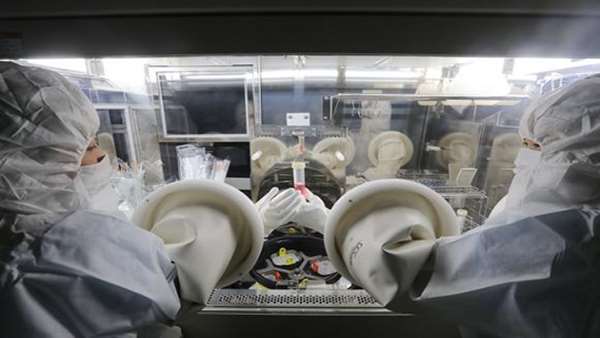Japan faces new competition in the race for regenerative medicine
Masaya Nakamura can pinpoint the moment when he decided to dedicate his life to researching and treating spinal cord injuries.
Masaya Nakamura can pinpoint the moment when he decided to dedicate his life to researching and treating spinal cord injuries. It was during his second year at Keio University, and he and some other students had taken a skiing trip near Nagano. One of his friends crashed into a tree at high speed, leaving him paralyzed from the neck down. Nakamura had been studying to become a doctor but was undecided about what type of medicine he wanted to practice until then. "For more than 20 years, my motivation has been to cure my friends spinal cord injury," he said.
Today, Nakamura is a professor in the department of orthopedic surgery at Keio University and a member of an elite group of scientists and doctors working in the field of "regenerative" medicine. These researchers believe the lives of patients suffering from Parkinsons disease, heart failure, blindness, paralysis and other debilitating health problems could be transformed using "induced pluripotent" stem cells, or iPS cells.
Nakamura says iPS cells could hold the key to curing people like his old friend. "No matter how good a surgeon I am, I cannot cure spinal cord injuries," he said. "Thats why we do basic research" into iPS cells.
Discovered in 2006 by Japanese scientist Shinya Yamanaka of Kyoto University, iPS cell technology "reprograms" old cells, returning them to a state similar to those found in embryos essentially turning back the clock on mature cells. Japan has remained the world leader in iPS cell research since the discovery, thanks in part to an injection of about $1 billion over 10 years from the government after Yamanaka was awarded the Nobel Prize in 2012.
But global competition is rising, especially from the U.S., the U.K. and Canada, and many in the field are asking whether Japan can keep its lead in a field where it has been an undisputed pioneer. The key, researchers and industry leaders say, is for Japan to move quickly to the clinical application phase.
"Seeing how fast other countries are moving, I am deeply concerned that Japan may not be able to remain at the cutting edge of regenerative medicine," said Yuzo Toda, chairman of the Forum for Innovative Regenerative Medicine, an industry group.
At Keio University Hospital, Nakamura and his colleagues are racing toward clinical applications. Next year, they plan to transplant iPS cell-derived neural precursor cells these are cells that can grow into different types of neural cells into nine adult patients with spinal cord injuries. These transplants have shown promise in tests on mice. After injecting human iPS cells derived from neural precursor cells directly into the severed spinal cords in mice, some regenerative events took place within three months, significantly improving their ability to walk.
There are risks, however. If cells for transplant include "undifferentiated" cells most iPS cells "differentiate" into specialized ones, but some cannot then cancerous tumors may form.
But professor Hideyuki Okano, also of Keio University, has improved the painstaking process of differentiating iPS cells efficiently into neural precursor cells and screening out those iPS cells which are not fully differentiated. As a result, he has cut the possibility of including these undifferentiated cells to less than one-100,000th. With more than 2 million cells being transplanted, some 20 such cells, by simple arithmetic, will enter a recipients body. In experiments on mice and in other tests, "such a number of them causes no tumor," Okano said.
The iPS cell-derived neural precursor cells Nakamura and Okano will use in their transplants are created, cultivated and stocked at Keios state-of-the art cell processing center, whose exacting standards for cleanliness are like those of a semiconductor factory. In a shining silver tank, freshly produced cells are frozen by liquid nitrogen at a temperature of minus 196 C and stored until they are ready to be transplanted.





ارسال به دوستان